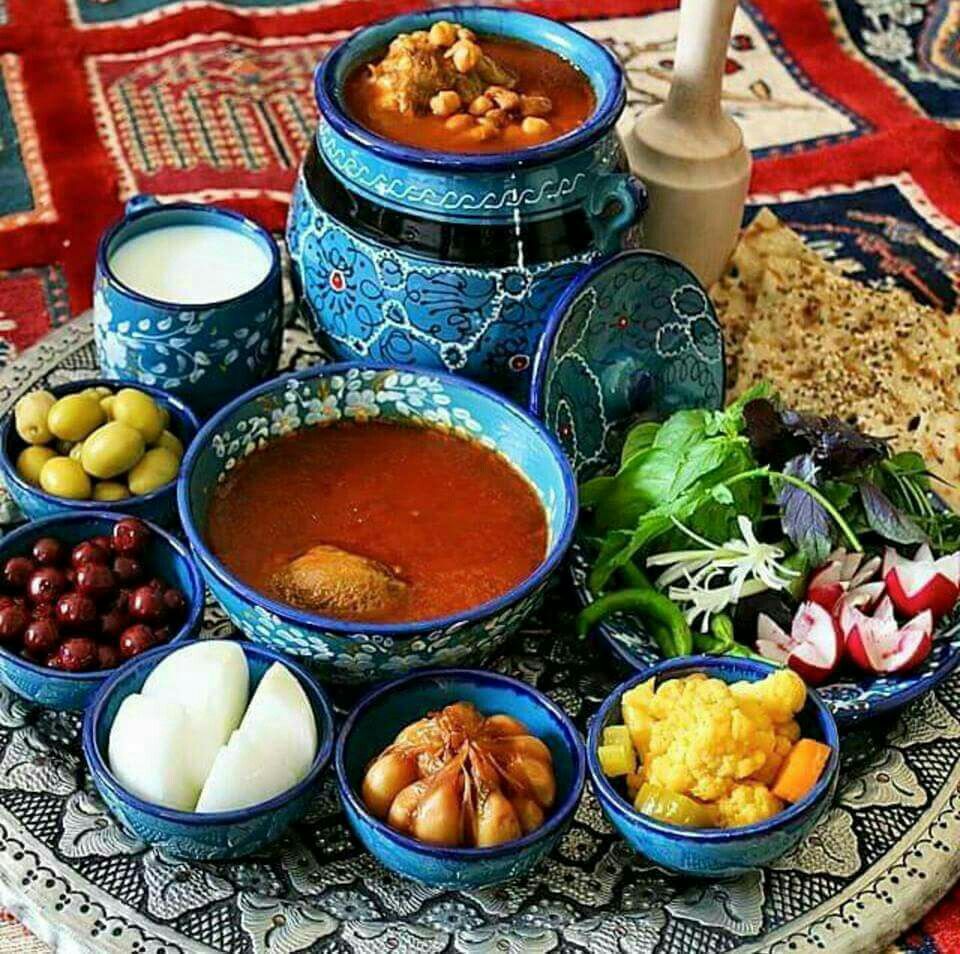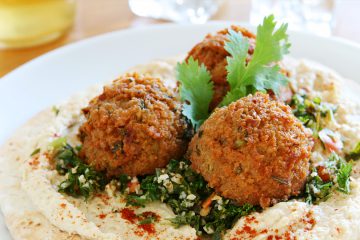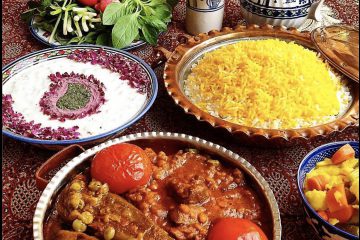
Persian cuisine
Persian cuisine: Iran is a land of healthy eating and enjoyment of life with a great variety of excellent and special dishes. For example, consider the great variety of soups including soup-e Morgh (chicken soup), soup-e Sabzijat (vegetable soup), soup-e Sard (cold soup), soup-e Piaz (onion soup), soup-e Goje (tomato soup), Ash-e Doogh (yoghurt soup), Ash-e Reshte (noodle soup) and many others.
Persian cuisine: Pish ghaza (appetizer)
Made to the chif’s discretion, but may include: Salad-e Shirazi (tomato, onion, cucumber, sour lemon juice), Salad-e Fasl (seasonal salad) (lettuce, tomato, cabbage, cucumber). Salads are sometimes served with olive oil, vinegar or a special dressing. Starters can also include Mast (yoghurt), Mast-o Musir (shallot yoghurt), Mast-o Khiar cucamber yoghurt) or Mast-o Esfenaj (spinach yoghurt).
Persian cuisine: Ghaza-ye Asli (Main dish)
The main meal is divided into three categories including: Dishes with Jujeh (chicken), dishes with Maahi (fish), Dishes with Gusht-e Ghermez (red meat such as lamb or beef).
All meals are garnished with different vegetables according to the season. There are also side dishes to accompany the main course, for example, Kashk-o Bademjan (aburigine, walnuts, onion and whey), Kuku Sibzamini (potato cake made with leek and eggs). As well as offering various types of meat, foods can be also be presented and cooked in a variety of ways.
The Khoresht group (stews) is served with rice and come in great diversity as can be seen here. Khoresht-e Gheimeh or split pea stew (split pea, French fries, tomato sauce, lamb or beef), Khoresht-e Fesenjan or Fesenjan stew pomegranate paste, walnut, chicken or duck), Khoresht-e Badenjan or aburigine stew ( aubergine, tomato sauce, lamb or beef), Khoresht-e Beh or quince stew (lamb or beef, tomato sauce, quince).
Kebabs are available everywhere. Usually flavored with a spice called Somaaq (sumac), they come in many varieties such as Barreh Kabab (lamb kebab), Kabab Kubideh (minced kebab), Jujeh Kebab (chicken kebab) and Kebab Maahi (fish kebab, trout or minnow or sole) are sometimes served with Gojeh Kababi (barbequed tomatoes).
Finally, it is good to mention a local food specialty which is famous nationwide and called Abgoosht or Dizy made from lamb, onion, tomato, potato and peas.
Dining tables are usually garnished with Torshi (pickles), Khiarshur (gherkin) and Sabzi-Tazeh (fresh vegetables) but Naan or Nun (bread) is always served.
Drinks include Ab-Ma’dani mineral water), Doogh (diluted yoghurt), Zamzam company products (Fanta, Coke) and Maolshaeir (non-alcoholic beer).
Deser (Desert)
Desserts include mostly orchard fruits prepared in various ways, and include Kharbozeh (melon), Hendevaneh (watermelon), Gilaas (cherry), Hulu (peach) or Golabi (pear).
Although Iranians appreciate orchard fruits, they often eat watermelon, melon, cucumber, pesteh (Pistachio) and Badam (almonds). Iranians generally love sweet things, and Yazd is famous as the source of the best confections. Although Esfahan products a famous local nougat called Gaz, which is made of budka (glucose), egg white, pistachio or almond.
Hot drinks like Chay (tea) and Ghahveh (coffee) are normally served after food.


